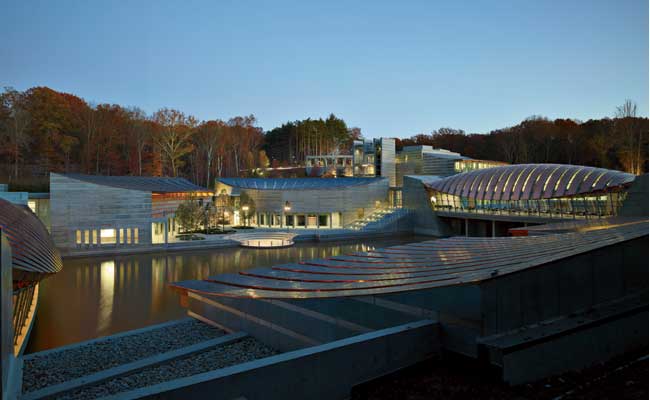Crystal Bridges School Visit program reaches over 30,000 students annually, many of whom have never been to an art museum before. In an effort to understand how a one-time fieldtrip affects students, the University of Arkansas conducted a random assignment evaluation which revealed gains such as increased knowledge about history and art, increased critical thinking, increased tolerance, and increased historical empathy. The impact was greater—sometimes three times greater—in students from low socio-economic and/or rural schools. Knowing that we wanted to continue to expand our reach in the lives of students and teachers, we had to ask ourselves how could we reach learners in sustained and meaningful ways beyond a one-time visit? How could we build off of the great outcomes our school visit program has upon students; especially students from lower socio-economic and/or rural schools? Crystal Bridges decided to explore distance learning as a possibility.
 Art museums have a long history of distance learning, beginning with loaning lantern slides at the turn of the nineteenth century. As technology has evolved, so have the ways art museums reach out to learners beyond their physical walls. In the 1990s and 2000s, video technology allowed museums to deliver “virtual fieldtrips” by connecting an educator to a classroom that might be a hundred miles or more away. As access to bandwidth and high-speed Internet increased, art museums created online experiences for learners in both formal and informal educational settings.
Art museums have a long history of distance learning, beginning with loaning lantern slides at the turn of the nineteenth century. As technology has evolved, so have the ways art museums reach out to learners beyond their physical walls. In the 1990s and 2000s, video technology allowed museums to deliver “virtual fieldtrips” by connecting an educator to a classroom that might be a hundred miles or more away. As access to bandwidth and high-speed Internet increased, art museums created online experiences for learners in both formal and informal educational settings.
As Crystal Bridges began to consider developing a distance learning course, we realized that we wanted to learn more about how art museums and arts organizations are leveraging technology to reach learners throughout the world. In July 2013, Crystal Bridges hosted more than 40 educators from art museums and organizations to a Distance Learning Summit. The Summit presented case studies of a variety of different types of programs including:
- Real-time synchronous programs via video conferencing
- Interactive websites that include galleries, games, and other interpretive materials
- Blended programs that incorporate online learning and onsite learning
- Massive Open Online Courses (MOOCS) that engage tens of thousands of learners at once
- Courses designed for students enrolled in virtual schools
The Summit revealed that there are a myriad different ways to leverage technology and reach learners and we considered all of these approaches as we developed our own distance learning program.
 After much research and consideration, we are thrilled to announce that Crystal Bridges is developing an online course for high school students. Through a partnership with Virtual Arkansas, this course will be available to any student in the state of Arkansas—and eventually the country—as part of their elective options. The first semester long course, American History and the Arts, will explore historical events and concepts through the lens of the visual arts. The second semester long course will be based on the temporary exhibition State of the Art: Discovering American Art Now, introducing students to innovative studio practice and contemporary culture through the work of artists throughout the country.
After much research and consideration, we are thrilled to announce that Crystal Bridges is developing an online course for high school students. Through a partnership with Virtual Arkansas, this course will be available to any student in the state of Arkansas—and eventually the country—as part of their elective options. The first semester long course, American History and the Arts, will explore historical events and concepts through the lens of the visual arts. The second semester long course will be based on the temporary exhibition State of the Art: Discovering American Art Now, introducing students to innovative studio practice and contemporary culture through the work of artists throughout the country.
This is an exciting time for education as online learning becomes a staple of every student’s school career no matter where they are geographically located. Museums are poised to be content providers, introducing students to a world of ideas that goes far deeper than a standard textbook.
UPDATE: In January, 2015, Crystal Bridges launched its first distance learning program pilot. READ ABOUT IT HERE.

